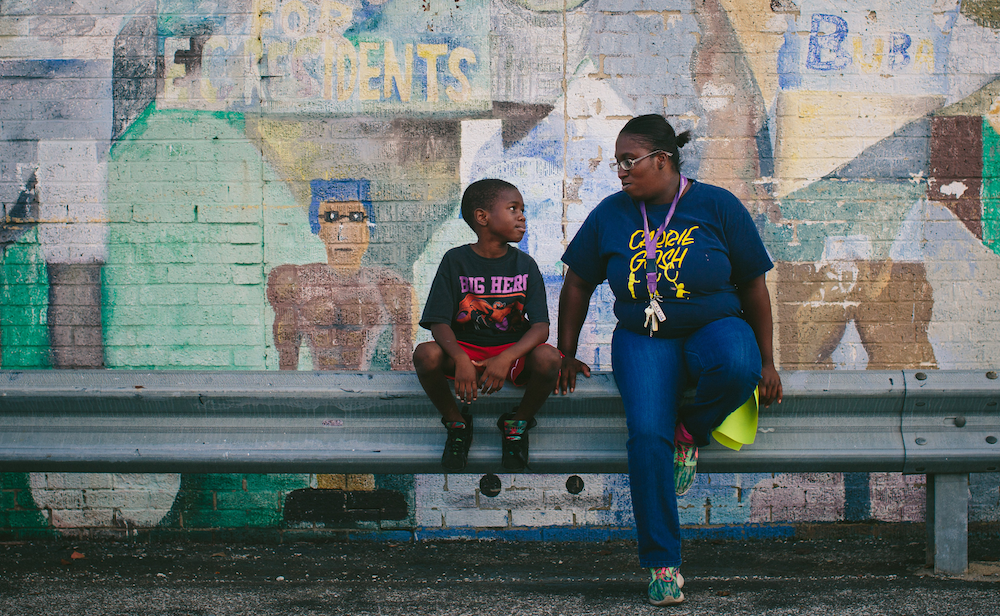This project won the 2017 “Best in-depth Reporting in a Community Newspaper” Peter Lisagor Award from the Chicago Headline Club
Flint. East Chicago. Our own city’s parks and schools. More than 2,000 years after humans first described the dangers of lead, the metal continues to do irreparable harm.
There is no safe level of lead, and even small amounts in the body can cause developmental delays and cognitive problems in children. Some researchers have linked childhood lead poisoning to spikes in violent crime; others have claimed that the widespread use of lead in ancient times contributed to the collapse of the Roman Empire. And while we’re doing a much better job now to reduce lead poisoning levels, nearly 80,000 children under age six were found to have elevated blood lead levels last year in the United States. Humans are still exposed to far more lead than our pre-Industrial Revolution ancestors, says Patrick MacRoy, former head of Chicago’s lead program. “In a broad sense, even levels that seem very low are, on an evolutionary scale, fairly high exposures for humans,” he says.
The recent crises in the Midwest have highlighted the dangers of lead in water and soil, two sources that were given little attention until recently because of their minimal contribution to lead poisoning. But as we’ve successfully reduced the amount of lead in houses and in the air, the sources of lead have become more and more diffuse. We now realize that we need to look at the whole ecosystem of lead, including water.
“Lead is a cumulative toxin,” MacRoy says. “You’re exposed to lead in a lot of different ways and you want to reduce all of those exposures.”
This special issue, produced by City Bureau reporters, dives into all the ways people are exposed to lead in Chicago and what we can do to help make our city safer for those most at risk of lead poisoning. You will meet some of the people whose lives have been upended by lead and some who are on the front lines fighting for changes in how our government handles the toxin.
We will be hosting several community events in 2017 aimed at informing our neighbors about lead hazards and how to best prevent and treat lead poisoning. Subscribe to our newsletter at www.citybureau.org/newsletter to receive updates about all of our events. We welcome your input and encourage you to explore sources of lead in your own neighborhood by texting the word LEAD to 312-697-1791.
Read the full print edition here.
Where It All Starts | Ground Zero: Why lead pipes in Chicago have the nation’s experts worried
Where We Live, Where We Play | Paths to Contamination: Go in-depth to learn how lead can enter the body, in private homes and in public parks
Where We Learn | Staying Ahead of the Curve: No matter how or where a child becomes poisoned by lead, the next big fight of their lives is in schools
Where We’ve Been | The Fight For East Chicago: In this photo essay, Alyssa Schukar looks at the people of East Indiana and an environmental legacy that will affect generations to come
Where We Go From Here | Keeping Kids On Track: Illinois considers giving lead-poisoned children access to its successful Early Intervention program
What We Have to Say | Lead Oral Histories: “We lack funds, lack people, and most of all we lack the political will to do it. So until this isn’t a problem anymore, I’ll be working on it.”
Listen to City Bureau reporter Timna Axel discuss the issue during an episode of Lumpen Radio show EcoChicago:
Watch Darryl Holliday and Nissa Rhee discuss the issue on an episode of CAN TV’s Chicago Newsroom:
This special issue of South Side Weekly was produced by City Bureau, a Chicago-based journalism lab. It was edited by Bettina Chang, Darryl Holliday, and Nissa Rhee, with additional layout and design by Erik Rodriguez.
We are grateful for the support of the Annie E. Casey Foundation, and of University of Southern California Center for Health Journalism’s National Fellowship and the Dennis A. Hunt Fund for Health Journalism.

